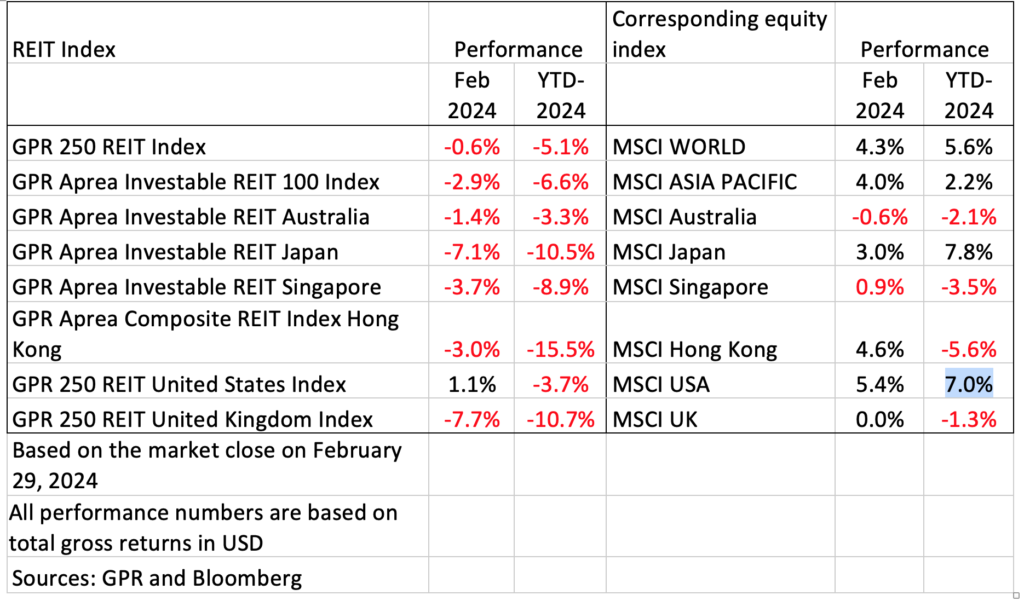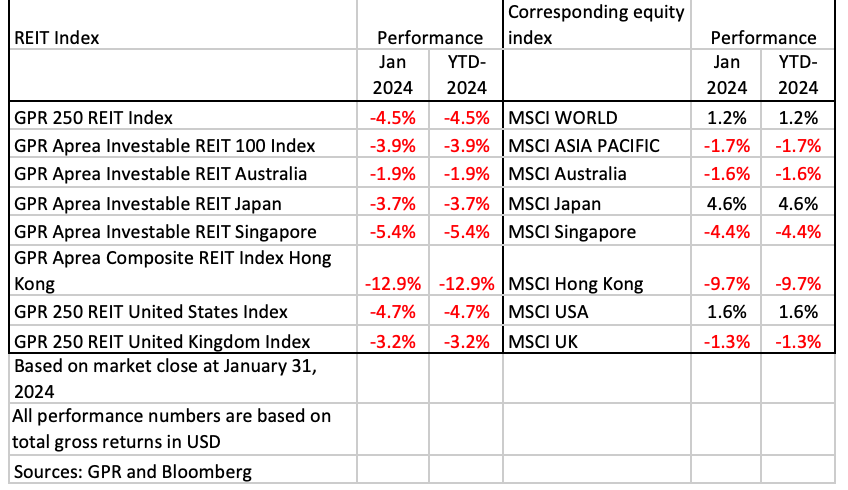Embassy REIT, India’s First REIT, Says It Has Multiple Levers Of Growth

(Published June 3, 2019)
The 47.50 billion rupee ($690 million) initial public offering by the Embassy Office Parks REIT India’s first real estate investment trust was approximately 2.6 times oversubscribed on the last day of the offer on March 20, 2019. The REIT’s unit price has since risen over 10% from its debut price of Rs 300 on the National Stock Exchange and the Bombay Stock Exchange.
A joint venture between India’s Embassy Group and Blackstone Group, the REIT owns offices and business parks that house multinational tenants such as JP Morgan, IBM, Wells Fargo, and Google.
REIT AsiaPac spoke to Mike Holland, CEO of the Manager to the Embassy Office Parks REIT, and asked him about the REIT’s leverage strategy, dividend payouts and potential growth.
Could you tell us a bit more about your portfolio? What’s unique about it? What’s the concept around it in terms of the location, the quality, and the tenant mix?
It is unique in that it is India’s first real estate investment trust. The portfolio as of March 27, 2019 is at 33 million square feet (sq. ft.), making it Asia’s largest office REIT. That 33-million-square-feet portfolio is spread across four cities, Bangalore, Mumbai, Pune, and NCR or the National Capital Region. Those four cities account for 72.5% of total Grade A office stock in the country. To give you some context in terms of the scale of the market: over the last five years, those four markets absorbed about 136 million sq. ft., which is more new absorption than the combined office space of the 11 global cities across the world.
More than 200,000 people work in our business parks. They are employed by over 160 office tenants, and we have over 95% committed occupancy as of December 31, 2018. Within the 33 million sq. ft., there are 25 million sq. ft. of offices, which is up and running and completed, with the balance 8 million sq. ft. of potential on-campus development. This reflects around 11% of the value of the portfolio so, in accordance with the Indian REIT regulations requiring at least 80% of the portfolio to be completed and income producing, new build development represents a small component of the overall portfolio.
We see this on campus development as being a lower risk type of development in that land titles are clearly understood and sanctioned, and construction delivery is more straightforward than a green field development approach. Given that the new buildings are on our existing campuses, we can leverage off our existing corporate tenant base. More than 80% of our gross rentals are from multinational companies, and we have seen strong demand from those occupiers – more than 60% of our leasing in the last 3-4 years, that’s over 4 m sq ft, has been with our existing tenant base.
The portfolio breaks into two broad categories: Firstly, our office parks, which range from about 25 acres to 120 acres, where typical leases can be well in excess of 100,000 square ft, where companies house hundreds, often thousands of employees in large scale, park-like settings, usually with a strong focus on export of services, often on a captive basis. Typical activities include technology, financial services, research, consulting and analytics, retail, healthcare, telecom, engineering, manufacturing, and so on. Our biggest office park has approximately 11 million square feet of completed offices.
The second category within the portfolio is a more city-centric core type of office buildings, with smaller units for diplomatic, legal, wealth, banking, and services sectors.
Blackstone is a sponsor of the REIT. To what extent are the assets owned by Blackstone and/ or developed by Embassy, and to what extent did you go out and collate assets from multiple parties?
The portfolio of assets has been assembled over a number of years by both sponsors. Blackstone and Embassy came together on the first assets in the portfolio in 2012. Roughly half of the portfolio comes from the joint-venture properties between Embassy and Blackstone, and the other half are properties that Blackstone had acquired independently over a number of years.
What’s your leverage strategy? What’s your optimal leverage and the cost of debt?
Post-listing, our leverage is at sub-15%. It was at 28% pre-listing and the majority of the proceeds from the IPO would be used to retire debt. We are comfortable to take leverage levels up over a period of time in order to take advantage of value accretive acquisition opportunities.
Having that low level of debt will allows us to have the firepower to go out and acquire new assets in due course. The cost of debt is in the low to mid 9%. Debt levels are capped under the SEBI (Securities and Exchange Board of India)’s REIT regulations, which require us to seek unitholder approval in the event that we propose to go beyond a 25% leverage. There is an absolute cap at 49%.
An interesting aspect is that the cost of debt is higher than the dividend you’re paying out. It would make commercial sense to be at zero debt in India right now. What is your view?
You have to consider the levels of potential growth that we’ve got in our portfolio. The initial yield that we were talking about before the IPO was in excess of 8%. We have also outlined how our distributions are projected to grow over the next three years in the prospectus. And that growth comes from the contracted rental increases that are there in our portfolio. There are some variations, but broadly speaking, market rental is growing at about 7%, with some parts at 10% and in others, it has been 12%. So, market rentals are rising faster than our contracted rental growth, which is around about 5% per annum. Consequently, rents are growing, and therefore, our projected distributions are increasing every year. In addition, we have a mark-to-market on our rentals at expiry of each lease across the portfolio. We are about 34% under-rented. Whenever we have a lease expiry, we aim to capture that mark-to-market and therefore further increases the income that gets channeled to distributions.
The debt that we currently have in the portfolio is primarily to deal with and address buildings that are currently under construction and therefore not income-producing. Once they become income-producing, we’ll look at how we deal with that debt, whether we refinance it or retire it. But the rental growth within the portfolio justifies having that debt.
Another growth area is what we call on-campus development. As of March 27, 2019, we have more 2.5 million square feet of real estate under construction. Once that comes on stream and is leased and occupied, it will also add to the rental growth, and that is without any cognizance being taken of yield compression and capital value appreciation.
What you have explained addresses the question around the office market, which is generally in growth mode with rents rising at about 7 to 10% per annum in different properties. How about capital values?
Our business model is not dependent upon cap values and cap rate compression. Of course, if your rental is growing, then your asset value will grow proportionately. There has been a cap rate compression in the market over a number of years. The market will always speculate about what’s going to happen to that in the future. However, the growth that we’re talking about here is growth in our base rental income from existing and newly constructed buildings.
The spread between the dividend yield that you’re offering, and the government bond yield is rather thin. I know that you’re oversubscribed as well, but how have you managed to overcome this relative comparison that investors make between the yield on a REIT and the yield on a debt instrument?
It’s fairly straightforward—it’s about growth. Firstly, there is that premium on our initial yield over government securities. But the key catalyst is the contracted growth in our rental income, which directly translates into investors’ quarterly distributions. At the end of a 10-year government security, you’ll get your $100 back, and in the interim, you would receive that 7-7.5% income annually at the end of the 10-year term.
With us, rents are expected to grow from our initial 8%, and the three-year forecast in our prospectus showed a 15% compounding growth. At the end of that ten years, if that tenant moves out when the lease expires or they stay, we’ll get a newly updated market rental.
So, you have the rental growth that often translates into increasing asset value over time. Government securities and other debt instruments generally don’t experience that. Hence, it’s not a surprise why REITs are so appealing to the market.
Can you just talk about what you think of India’s developments in the REIT market sector. How do you see it growing in the next few years now that you’ve made the first move?
Obviously, we think REITs are a great product. We believe that they are predictable, less volatile, and are asset-backed.
Our REIT is backed by 160 corporate leases. We’re in a market where rentals and capital values are still very low in relation to any global market comparison.
We believe that the demand and supply are nicely balanced. There are many investors domestically and internationally who want to be able to play India’s growth story, and the country’s real estate. REITs provide a high-level of predictability and transparency with a strong focus on good governance. Companies are here not just for the low rent; they’re here for the talent in this technologically-connected globalised country. And that’s why our investors buy into commercial real estate that’s supporting the global economy.
We believe that we’ve made a fair amount of effort to start the REIT market, and now for us the job is to deliver on those projections. We believe that others will endeavor to replicate that. It’s a great shift for the Indian real estate sector and has the potential to bring more liquidity to the sector, bring more cost-effective capital, higher levels of transparency, and governance. Embassy REIT is a milestone in the growth of India’s real estate industry.




